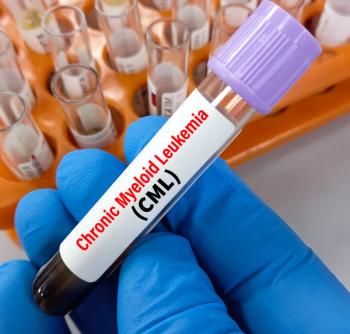
- July/August
- Volume 9
- Issue 5
Putting Data to Work in Specialty Pharma
With the right technology and information, we can better understand everything from clinical best practices to patient behaviors and even operational efficiencies.
The use of big data is by no means a new phenomenon in health care. Ever since electronic health records were mandated, in 2004, the industry has dreamed of rich, structured, and minable digital data sets. With the right technology and information, we can better understand everything from clinical best practices to patient behaviors and even operational efficiencies. It has taken more than a decade to get to this point, but we are now moving beyond simply collecting data and using it to improve outcomes and operational efficiency, which is now extending to pharmaceuticals and the prescribing process.
Technology now empowers us to digitally connect traditionally disparate pieces of the prescribing process and automate manual administrative tasks and steps. Although many still rely on traditional methods, the hope is that new technologies will eliminate paperwork, fax, and phone as the primary channels to connect providers, payers, pharmacies, and patients throughout the prescribing process. Beyond significantly streamlining workflows, the other inherent advantage of these innovative solutions is the ability to capture structured data from which powerful insights can be extracted and applied.
DATA OPPORTUNITIES IN SPECIALTY PHARMACIES
One of the lowest-hanging means of leveraging data in pharmacies is to expedite the dispensing of medications. This is particularly true with specialty pharmaceuticals, which require extensive consent and prior autho- rization from payers. With every step of the process enabled by and captured in a comprehensive digital platform, it is possible to audit how long it takes from the point a prescription is received by the pharmacy to when it is dispensed and reimbursed. Analysis related to throughput can be done at a macro level for any overarching operational insights into process hurdles. Macro analysis will allow for internal benchmarking and goal setting and, in time, may even allow for industry benchmarking and the establishment of best practices for delivery times.
Drilling down a level further, pharmacies will now be able to look at not only how fast they are processing prescriptions as an organization but also the precise sources of pitfalls that cause delays. For example, it may become clear that certain medications are consistently delayed in the prior authorization process. The data will help determine why that is and inform a strategy to address the issues specific to that medication or insurer moving forward. That said, the delays are often beyond the control of the pharmacy, which is why it is important that providers and payers have the same data exchange, capture, and analysis capabilities.
BEYOND THE RX COUNTER
Because each step in the prescribing process is affected by the prior step, it is important to understand that the benefits of digital data extend well beyond just the pharmacy. Physicians using sophisticated digital prescribing platforms will start to see trends that can be extrapolated into meaningful insights and best practices. Delays in the prescribing process, particularly because of prior authorization, are a huge administrative burden for physicians that we often hear about, and data are the key to understanding and addressing it. With 1 cohesive system, clinicians will now be able to easily assess prior authorization approval rates for different medications and adjust or authorize treatment accordingly, speeding up the overall process without the back-and-forth among pharmacists, clinicians, and their frustrated patients. Payers can also slice and dice the data. In this way, physicians will have a better understanding of how likely the drug they’ve prescribed is to be approved by a certain payer and when, if clinically appropriate, to switch to a comparable drug on the payer formulary to get ahead of common causes of denial and delay.
Another huge piece of the data puzzle is pharma companies, longstanding consumers of data and research for competitive uses. These companies are now looking to collect information on how patients are using their products in real time to provide insights into patient adherence, a critical point of treat- ment efficacy. Providers’ prescribing behav- iors will also be brought to light, along with demographic prescribing trends. These are just top-line examples of how data can deliver many powerful insights, which pharmaceuti- cal companies can then leverage to better understand and serve the patient populations their drugs are intended to treat.
It is clear that various stakeholders, including payers, providers, and patients, see value in data as it pertains to specialty pharmacy. As specialty prescriptions continue to increase in price and demand, understanding how everyone uses and benefits from the different data sets can facilitate the improvement of patient outcomes all while lowering costs. Now that we’ve spent the past decade collecting these rich data, the next big hurdle will be to unlock access to the information for the specialty drug market. Health care models will continue to shift, so health care companies and organizations must provide cost-effective services while using data to document and prove their impact on patient outcomes and expenditures.
Articles in this issue
over 7 years ago
Buying In on Biosimilarsover 7 years ago
Ready for New Rules on Hazardous Drug Management?over 7 years ago
A Case for Biosimilar Use: 5 Things You Need to Knowover 7 years ago
What Makes Specialty Infusion Pharmacy So Special?over 7 years ago
Going Beyond the Headlines on Health Spending in 4 Stepsover 7 years ago
Will a New Utah Law Change the DIR Conversation?over 7 years ago
Limiting the Distribution of Oncology Drugsover 7 years ago
Patients First: Is Specialty Pharmacy in the Blueprint?Newsletter
Stay informed on drug updates, treatment guidelines, and pharmacy practice trends—subscribe to Pharmacy Times for weekly clinical insights.























































































































































































































